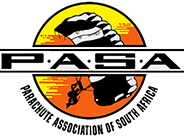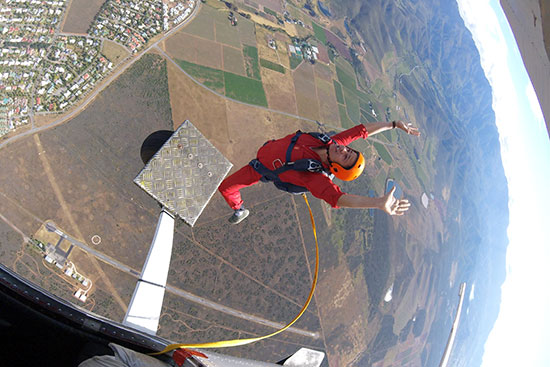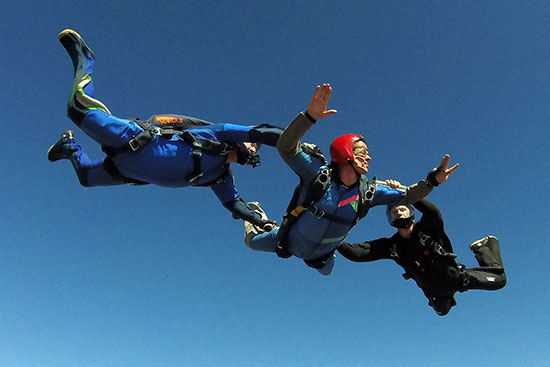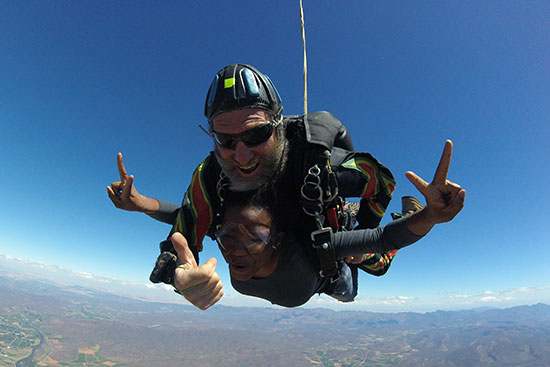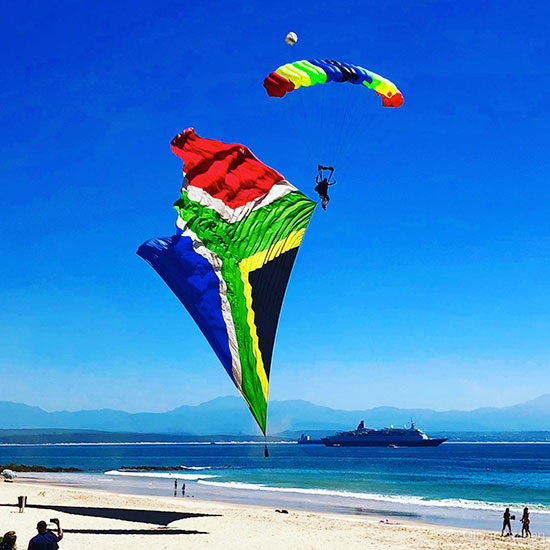CAA/ARO/004
|
Skydiving -how do I get started & what's on Offer? |
|
There are several ways one could get started or involved with skydiving. Please visit the following pages for all the information you'll need. After you've seen what's on offer you can go to the Drop Zones to find out prices and location.
Static Line Progression
Static Line training has evolved over the years from its military origins into a successful method for training sport parachutists. Before the first jump, students receive tuition on all aspects of the jump. This will typically take 5-8 hours and will include classroom training as well as hands-on practical. They are then taken to an altitude of 3000ft to 3500ft for their first jump. As they fall away from the aircraft, the main parachute is deployed by a static line attached to the plane. The parachute must then be checked for performance and then controlled down to the landing. Subsequent static line jumps require about 15 minutes of preparation. After 3 good static line jumps, the student will be trained to pull their ripcord for themselves. The student then does 5 more static line jumps where they demonstrate this ability by pulling a dummy ripcord as they leave the plane (the static line is still initiating the deployment). Thereafter the student is cleared to do their first actual freefall. The first freefall is a 3 second delay before the student initiates the pull sequence. Next is a 5 second delay jump. Subsequent jumps go to progressively higher altitudes with longer delays. The progression consists of a total of 16 freefall skydives. Once successfully completed, the student is cleared off student status. The maximum weight limit for anyone wanting to do static line jumps is 100kg and you must be in general good health. The minimum age for training is 16 and parental consent is required for jumpers under the age of 18.
Accelerated Freefall Progression
The Accelerated Freefall (AFF) programme was instituted in 1982 as an "accelerated" learning process as compared to the traditional static line progression. The AFF programme is the most intensive training programme and will give you a true taste of modern sport skydiving. The ground training is a bit more extensive than static line to prepare the student for the 35 to 40 seconds of freefall. On the first AFF jump, you exit the aircraft at 11 000ft with two AFF instructors who will maintain a grip on you from the moment you leave the aircraft until your parachute begins opening. The instructors will monitor and assist you throughout the freefall as you perform a sequence previously rehearsed on the ground. At 5 000ft, you will open your own parachute, check it for performance and then control it down to the landing. The AFF program consists of ten levels of progression, each consisting of a ground training session and a minimum of one jump. Each level has to be completed successfully, by meeting pre-determined learning and safety objectives, before moving on to the next one. On levels 1 - 3 you will be assisted by two AFF instructors. These dives will focus on altitude awareness, stability, body position and successful main parachute deployment, while introducing basic manoeuvres such as turns and forward movement. Levels 4 - 7 require only one AFF instructor to assist you in learning solo skills such as turns on heading, back and front loops, more advanced forwards movement and combining manoeuvres. Levels 8, 9 and 10 are a minimum of three solo jumps: Two are Instructor assigned task jumps, while the third is a low altitude "hop and pop". Some drop zones offer video footage of the experience. The maximum weight limit for anyone wanting to do AFF jumps is 100kg and you must be in general good health. The minimum age for training is 16 and parental consent is required for jumpers under the age of 18.
Tandem Jumps
Tandem skydiving is a popular means to offer an introduction to the sport allowing the curious potential student to experience, first-hand, the thrill of skydiving without the time and financial commitment of AFF or Static Line progression. Ground instruction training is done prior to the skydive and takes about 15 minutes. Additional training/briefing is done throughout the tandem skydive experience. A tandem jump is performed by an experienced jumper called a Tandem Master or Tandem Instructor and the student. The Tandem Master wears a parachute system designed to safely suspend two people. The student wears a specially designed harness that attaches in four points to the front of the Tandem Master. A tandem freefall generally lasts between 30 to 45 seconds, followed by a 4 to 5-minute canopy ride to the ground. Most drop zones offer footage and/or still photographs of the experience. A tandem skydive requires that you’re in general good health. The maximum weight for a tandem student is 100kg. Parental consent is required for jumpers under the age of 18. Following the tandem skydive, those interested in further training can obtain the necessary information from the Tandem Master.
Demonstration Jumps
Demonstration, or Show Jumps, are the presentation of sport parachuting at a site other than a recognised drop zone for the benefit, enjoyment and entertainment of spectators and to promote the sport. They are a great way for your school, organization, sporting event or club to promote themselves. You can display your product branding to large audiences "from the sky" by either having branding on flags flown under the jumper or even the parachute can be branded. Examples of show jumps include: • 1995 Rugby World Cup Final • Cricket Events • School Sports Days • Product Launches Contact one of our affiliated Drop Zones or Show Jump Operators for more information. To allow for the administration processes, please give at least 7-10 days’ notice. You would need to provide a request letter from the event organiser as well as land owner permission.
|
+27 21 553 3398
